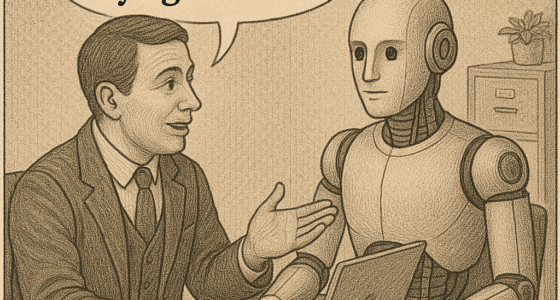Headline: The Information revealed yesterday that OpenAI has already designed a full set of real‑time document‑collaboration and chat features inside ChatGPT, positioning it as a direct competitor to Google Workspace and to Microsoft Office—despite Microsoft being OpenAI’s biggest investor and distribution partner.
Why this matters
| Vector | What changes today | Consequence for incumbents |
| Overlay ➜ 1st‑party productivity | ChatGPT moves from “co‑pilot” into primary workspace. Users will create, edit, comment, and share docs without ever opening Docs/Word/Slides. | UI disintermediation reaches the heart of SaaS: even the world’s most entrenched, bundled seat licences are now exposed. |
| Partner ➜ Predator | Microsoft has relied on exclusive OpenAI model access to fortify its own Copilot‑inside strategy. An OpenAI‑branded office suite breaks that détente. | Microsoft’s risk multiple jumps: it must defend 365 seat ASPs while negotiating with a supplier that is now a rival. |
| Agent native from day 1 | Because the suite is born inside ChatGPT, every document, spreadsheet or slide is natively callable by an agent via the ChatGPT Actions API. | Productivity tasks become zero‑UI function calls, accelerating the “pay‑per‑action” model across the category. |
Revised 2025‑2030 displacement timeline (even more aggressive)
| Phase | Key catalyst just added | ↑ Casualties vs. prior forecast |
| Platform coup (2025‑26) | OpenAI Office private beta lands; Google and Microsoft must respond with full autonomous‑agent permissions or risk user leakage. | Atlassian/Monday seat‑loss risk rises from 35 % ➜ 45 % as collaboration happens inside ChatGPT. |
| Overlay land‑grab (2026‑28) | Agents written for ChatGPT Office spill over into other SaaS domains (CRM, ITSM) through Actions calls. | HubSpot, Zendesk, Smartsheet exposed to ≥ 50 % churn unless they re‑price on usage. |
| Seat collapse (2028‑30) | OpenAI bundles outcome‑priced agents (e.g., “Draft RFP”, “Quarter‑close Pack”) with the suite. | We now expect > 60 % of today’s top‑50 B2B apps to fall below Rule‑of‑40. |
Winners & losers table —
post‑OpenAI‑Office shock
| Vendor | Agentic fitness | 2030 seat‑loss risk | Aggressive call |
| OpenAI | Born‑agentic, owns orchestration layer | n/a | Captures 10 – 15 % share of global productivity workloads by 2030; becomes the de facto intent hub for third‑party agents. |
| Microsoft 365 | Full stack but now dual‑hat partner/competitor tension | 25 % (↑ from 15 %) | Keeps enterprise foothold via Windows/Teams integration, but margins compress as buyers benchmark against ChatGPT usage pricing. |
| Google Workspace | Consumer‑SMB skew, weaker enterprise lock‑in | 35 % | Must match pay‑per‑action pricing and bolt Gemini agents into every file type or risk accelerated churn. |
| ServiceNow / SAP | Deep workflow/data fabrics | <15 % | Opportunity: plug into ChatGPT Office as system‑of‑record rather than fight UI head‑on. |
| Mid‑tier collaboration SaaS | Thin data moats | 45‑70 % | Most become feature APIs called by ChatGPT agents or are forced into freemium niches. |
Strategic take‑aways
- UI is officially optional. Once the flagship productivity suites themselves can be invoked through natural‑language agents, every SaaS UI becomes an implementation detail.
- Data‑fabric or death. Vendors that cannot expose governed, fine‑grained data scopes for external agents will be seen as “dumb silos” and priced accordingly.
- Outcome pricing benchmark has been set. Salesforce’s $0.10 Flex‑Credit and whatever OpenAI announces next will anchor CFO expectations; seat ARR will be treated as a legacy metric.
- Partner conflicts go mainstream. Microsoft now competes head‑on with its own model supplier; expect copy‑cat tension (e.g., Google vs. Anthropic) to ripple through the ecosystem.
Immediate action checklist for SaaS leaders (next 100 days)
- Publish a usage‑metered SKU that is cheaper than your seat list price—before your customers demand it.
- Embed ChatGPT Actions (or equivalent agent API) access into your product; better to be the callable backend than the ignored front‑end.
- Start tracking agent‑to‑UI invocation ratio in product analytics; it will become your lead indicator for seat erosion.
- Prepare a co‑opetition narrative for the board: how you will leverage and compete with OpenAI (or whoever controls the agent hub) simultaneously.
The revelation that OpenAI is quietly building a Workspace/Office rival turns what looked like a five‑year erosion of seat‑based SaaS into a potential three‑year cliff‑edge. If the most widely used language model on the planet becomes the primary place where documents, sheets and presentations are authored—and those artefacts are natively agent‑callable—then the argument that “most SaaS will be hidden behind agents” shifts from provocative thesis to near‑term operational reality.









